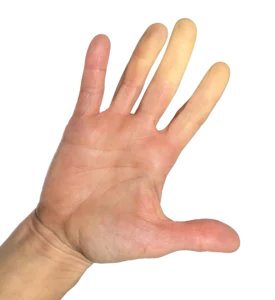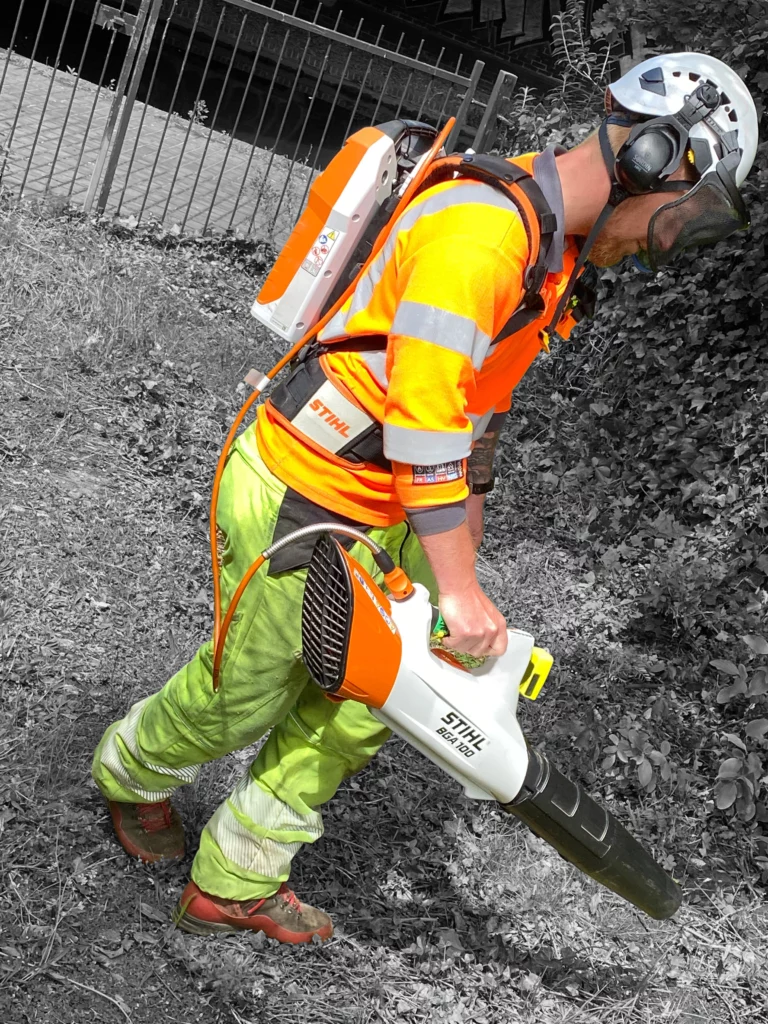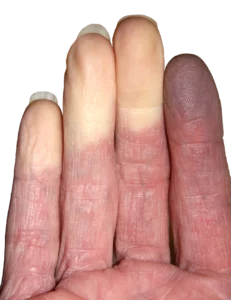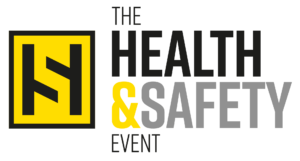It is the responsibility of Occupational Health Professionals to manage the HAVS health surveillance programme within organisations where the risk of vibration exposure needs to be managed. The Health and Safety Executive (HSE) has set out guidelines to help Occupational Health professionals manage this complex and difficult to diagnose health condition, commonly known as HAVS (hand arm vibration syndrome).
HAVS Symptoms to look out for
There are vascular, sensorineural and neurological components that make up the symptoms of HAVS.
 The most commonly reported of these symptoms include numbness and tingling in the fingers, often accompanied by a reduced sense of touch and an increased sensitivity to temperature. This is caused by nerve damage and can be disabling, making fine motor skills almost impossible, and often painful.
The most commonly reported of these symptoms include numbness and tingling in the fingers, often accompanied by a reduced sense of touch and an increased sensitivity to temperature. This is caused by nerve damage and can be disabling, making fine motor skills almost impossible, and often painful.
Operatives of vibrating tools typically report joint pain and stiffness in their hands, wrists and/or arms. Nerve and muscle damage will affect the grip strength of sufferers making the continued safe use of vibrating tools almost impossible.
HAVS sufferers can have trouble completing tasks in the workplace involving fine, detailed work and struggle to work effectively in cold conditions. In addition, sufferers may also experience an impact on personal and family life. The ability to lead a normal life will be limited as tasks such as fastening buttons and zips and playing with small toys with children and grandchildren become difficult and painful.
It is important to mention that sufferers of HAVS won’t always present with both vascular and neurological symptoms, but neurological symptoms generally appear earlier than finger blanching.
What role does Occupational Health play in managing the risk of HAVS
Manging the risk of vibration exposure within a business requires a strategic approach that includes Occupational Health, in addition to Health and Safety risk assessments and implementing a hierarchy of controls.
 Workers likely to be exposed to more than the daily exposure action value (EAV) of 2.5 m/s2 A(8) (or 100 HSE points) should be under suitable HAVS health surveillance and cover:
Workers likely to be exposed to more than the daily exposure action value (EAV) of 2.5 m/s2 A(8) (or 100 HSE points) should be under suitable HAVS health surveillance and cover:
- employees who are likely to be regularly exposed above the EAV;
- employees likely to be occasionally exposed above the EAV where the risk assessment identifies that the frequency and severity of exposure may pose a risk to health; and
- employees who have a diagnosis of HAVS (even when exposed below the EAV).
As part of an effective risk assessment process, organisations should include HAVS health surveillance, with a focus on the individual. There are several different types of tests that can form part of a HAVS health surveillance and these are all listed by the HSE in there guidelines to help Occupational Health Professionals and can be used to assess the early stages of HAVS before it develops.
These tests assess the severity and extent of any sensory or circulatory issues reported alongside other medical conditions that can produce similar symptoms. It is critical that an occupational health professional is involved in the assessments and that health checks are carried out regularly – being proactive can make a huge difference to sufferers.
The cost of HAVS, for both employees and employers, is huge – the financial, reputational, and personal costs are covered in our True Cost of HAVS blog.
As an occupational health professional, you can help your organisation meet their legal responsibility to manage your employees’ risk of HAVS. You can advise on an appropriate health surveillance programme for employees who are exposed to vibration. This will help to detect and manage the early signs of HAVS through a strategic health surveillance program that provides vital information to your organisation, and highlight areas for concern or additional focus and training.
What do you do if someone presents with HAVS symptoms?
In accordance with Regulation 5 and Schedule 3 of the Reporting of Injuries, Diseases and Dangerous Occurrences Regulations (RIDDOR) 1995, organisation are required to report any instances of HAVS or associated health conditions.
 The HSE often include any lack of reporting of incidences of HAVS in prosecutions bought against organisations so beware and understand your responsibilities.
The HSE often include any lack of reporting of incidences of HAVS in prosecutions bought against organisations so beware and understand your responsibilities.
If, as part of your regular health checks, Occupational Health Professionals become aware of an operative that is suffering from the ill-effects of vibration exposure, whether with neurological or vascular symptoms, they must implement an additional layer of protection and surveillance.
Vulnerable operatives should follow a different risk assessment process, as the risk for them of further vibration exposure is more dangerous. Occupational Health must also carry out additional and more thorough health checks and surveillance to ensure they are proactively being protected from further damage.
There is a legal obligation to provide suitable HAVS health surveillance where the risk assessment indicates a risk to workers’ health, as set out in regulation 7 of the Control of Vibration at Work Regulations 2005.
The HAVS health surveillance programme
 Managing the risk of vibration exposure is the responsibility of both employers and employees, and to make your risk management strategies a success, they must work together. Occupational Health Professionals, who are providing clinical HAVS assessments and health surveillance programmes, play a key role in explaining the serious nature of the health conditions associated with vibration exposure and the purpose of continual, regular HAVS health surveillance.
Managing the risk of vibration exposure is the responsibility of both employers and employees, and to make your risk management strategies a success, they must work together. Occupational Health Professionals, who are providing clinical HAVS assessments and health surveillance programmes, play a key role in explaining the serious nature of the health conditions associated with vibration exposure and the purpose of continual, regular HAVS health surveillance.
It is critical that workers are made aware of the purpose and outcomes of their health surveillance. They must be made aware that their fitness for work will be disclosed to their employer, but that no clinical information will be disclosed without their consent.
The primary aim of a health surveillance programme is to ensure the health of workers, which includes identifying and protecting individuals who may be at risk.
However, they are also there to check the long-term effectiveness of control measures, such as those implemented to manage the vibration exposure. An effective HAVS Health Surveillance programme can prevent workers developing HAVS symptoms that can cause the disabling loss of hand and finger function.
HAVS health surveillance programmes should be implemented where a risk assessment has highlighted a vulnerability or potential for over-exposure, and should work in accordance with the vibration risk control measures set out in the risk assessment.
The HSE state that when HAVS health surveillance is required, it should be carried out annually. Assessments and routine health surveillance are needed for HAVS to ensure vulnerable operatives are identified early and put under additional control measures to ensure further damage is limited or avoided.
They go on to recommend early assessment of newly-exposed workers as susceptible individuals can develop symptoms in 6 months or less.
There are several different tests and questionnaires that are available to Occupational Health Professionals to determine type and severity of HAVS symptoms. These include Adson’s, Tinel’s and Phalen’s tests and should be used where appropriate – further information about this can be found on the HSE website.
A tiered approach to HAVS health surveillance
As part of the process in identifying employees with symptoms that require further surveillance or investigation, a tiered HAVS health surveillance programme is recommended. Occupational Health Professionals who have experience of assessing and diagnosing HAVS are specialists, and as a result, are a limited resource.
Therefore, most medical appointments with doctors are normally limited to cases where symptoms of HAVS have been identified through the Occupational Health programme and tests mentioned above. A tiered approach will help to manage risk and identify those most at risk from vibration exposure.
Download the HAVSPRO Brochure
Discover how HAVSPRO monitors vibration levels accurately and triggers alerts to protect your staff and organisation against the risks of HAVS and WBV (whole body vibration).
It monitors individual tool vibration levels and the exposure each person has to it.
HAVSPRO then collates all this data and creates customisable reports to help you prevent overexposure.
Find out everything you need to know in our brochure – simply complete the form!
Find out more about HAVSPRO and how it can help you protect your staff and business: 01332 547 148 or you can download our Employers Guide to HAVS


